In lots of ways, the Faroe Islands is a premier walking destination. A lunar landscape of lakes, sea and mountains, scattered with ancient landmarks, all overlaid with a mystical layer of Faroese legend that can only be fully felt on foot.
But hiking on the Faroe Islands comes with challenges too. It’s a wild place: quite a few of the paths themselves are sketchy and sometimes non-existent, and there is some friction in popular places with locals. And then there’s the weather. An archipelago stuck out in the middle of the North Atlantic, the only thing that never changes about this climate is that it constantly changes.
With these boons and busts in mind we’ve written an essential guide to hiking on the Faroe Islands.
What you need
We have a summertime (or shoulder season really) clothing and packing list for hiking in the Faroes here.
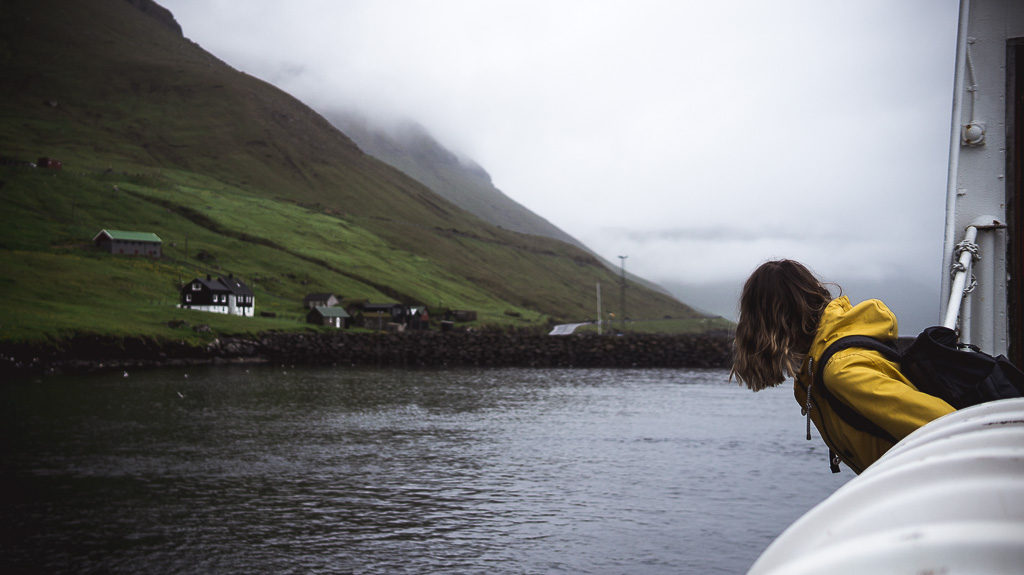
Where to go
We have pieced together three excellent short day hikes in this blog post, which are moderate and utterly beautiful.
Each of the larger islands has something to offer hikers, like the island of Mykines, with its thousands of puffins (a blog post all on its own). We found ourselves spending a lot of our time on Vágar. It has some breath-taking individual stops, including the famous hanging lake Sørvágsvatn and the Drangarnir sea stacks.
The hiking guide produced by Visit Faroe Islands has walks that cover all 18 of the main islands.
Fees
It’s a sad fact that the recent influx of visitors to the Faroe Islands is beginning to cause some issues.
Disturbing wild animal habitats and damaging fragile natural landscapes are both problems that have been lain at the tourist’s door. And rightly or wrongly this means that as of 2019, some landowners have taken the decision to restrict some areas: asking for payment, discouraging people from going there, or closing them entirely.
These are the places that now charge admission:
> Mykines island
Going to Mykines to puffin-watch was one of our favourite things to do while on the Faroes – but there are some costs involved.
First of all, there’s the boat. You can find the timetables here, with the most common thing being to go out in the morning, back in the late afternoon. There are two guesthouses on Mykines itself so you could book ahead and stay overnight if you like (reservation would be essential). The boat costs 120 DKK per person (approx. £15)
Secondly, Mykines requires you to buy a hiking permit to leave the harbour village and actually go see the puffins and gannets. You can buy online and it’s 100 DKK per person (approx. £12)
And yes there is someone in high-vis checking your phone for the permit email.
> Lake Sørvágsvatn
One of the most famous sights to hike to and photograph, Lake Sørvágsvatn is a lake the seems to hang over the sea. Seeing is believing this mind-bending sight, and the 3km(ish) walk out there is both easy and beautiful.
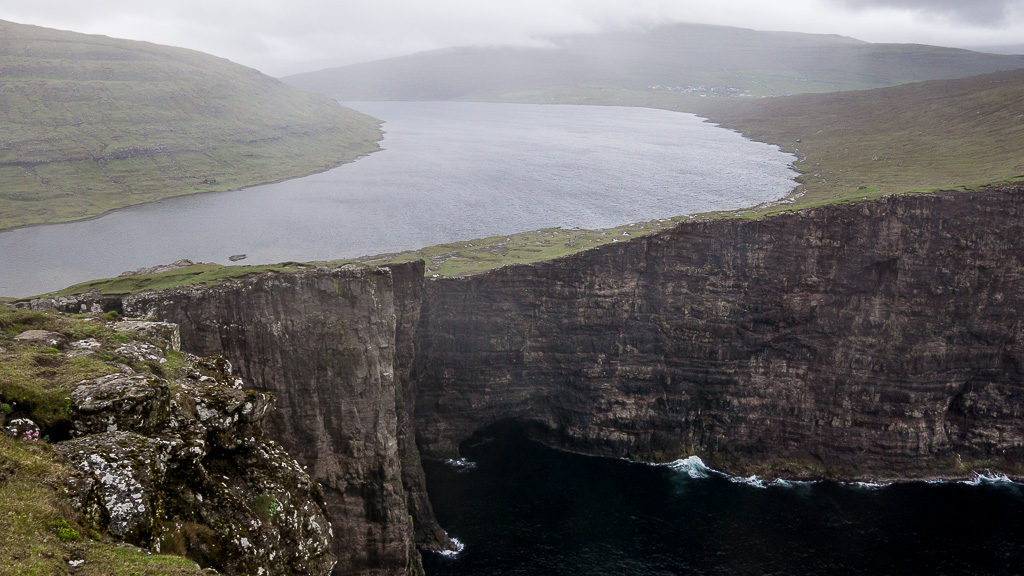
Originally it was a loop walk, taking you back past the Bøsdalafossur waterfall and along the other side of the lake.
Now, there is a ticket booth at the entrance of the walk, costing 200 DKK per person (approx. £24) to walk out to the lake edge. And currently the second half of the walk is closed, meaning it’s now an out and back.
> Saksun beach
As of 2019, the landowner of Saksun beach has also decided to charge people to walk out to the sea. No word as of yet how much this will be (please let us know if you know!)
> Sea stacks hike
As well-known are the Drangarnir sea stacks. There’s many a-photo of hikers standing on the land’s edge looking straight through the oval hole sea stacks out to the Atlantic.
Whilst there is no charge for this hike, we found out that you aren’t really allowed to do it. The landowner isn’t happy about people walking out there on what is claimed to be a very dangerous walk.
Case in point: if you book on a guided tour, they don’t walk you out there at all, but boat you around.
Seasons & when to go
Come in the summer and you’ll be getting only about 3 hours of nighttime, and even that is a kind of pinky blue. Sunrise is around 3.30, sunset is gone midnight.
It’s a rather extraordinary thing, and the Faroese seem attuned to it. You’ll often see locals out dog walking, shopping or reversing a boat trailer – when it’s 1am.
If you visit the Faroes at summer solstice, you could join the Solstice Festival.
Go in the winter and you’ll have very short, crisp and cold days, but quite probably caught out with snow (particularly on the south islands).
Even in spring or autumn, you could still experience very cold/odd weather, but probably nothing as extreme.
Weather
We read it everywhere before we went to the Faroes, but it’s very true: prepare to be flexible with your plans. Weather changes fast on the islands so to accommodate this we’d say make your trip at least longer than three days.
> Tip: check the weather map over the symbol based weather forecast. Whilst the forecast was unhelpfully vague, the next 12 hours on the map were usually pretty accurate and you could follow where the cloud breaks were going to be and -quick!- walk there.
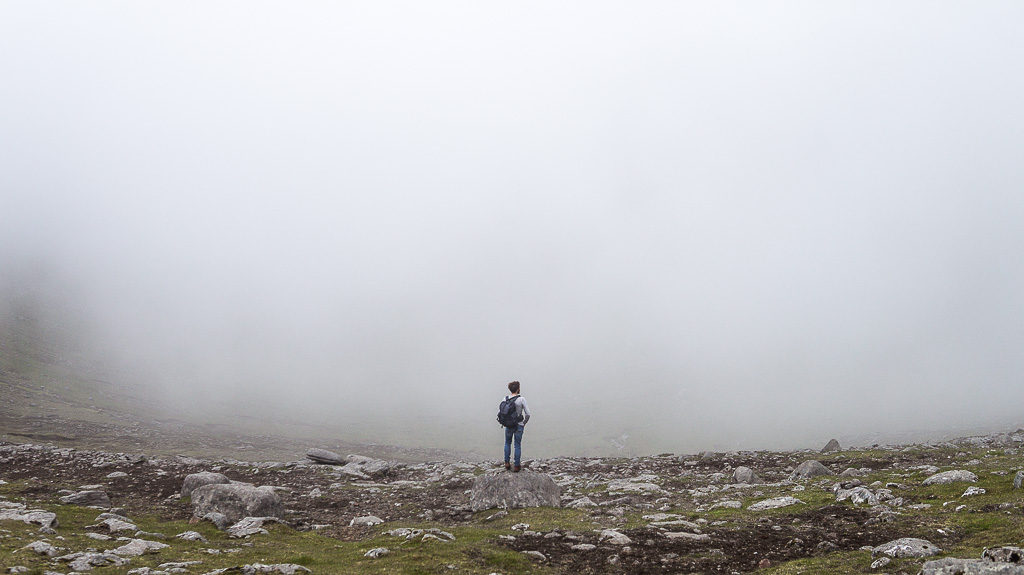
Difficulty
The Faroe Islands is a rocky, wet place with waterfalls, bogs, sea cliffs and mountains. So the terrain can be steep or muddy, or both.
The highest mountain on the Faroes is about 800m (so technically not a mountain at all), but these mountainous hills rear up sharp and sudden, so there’s plenty of steep uphill.
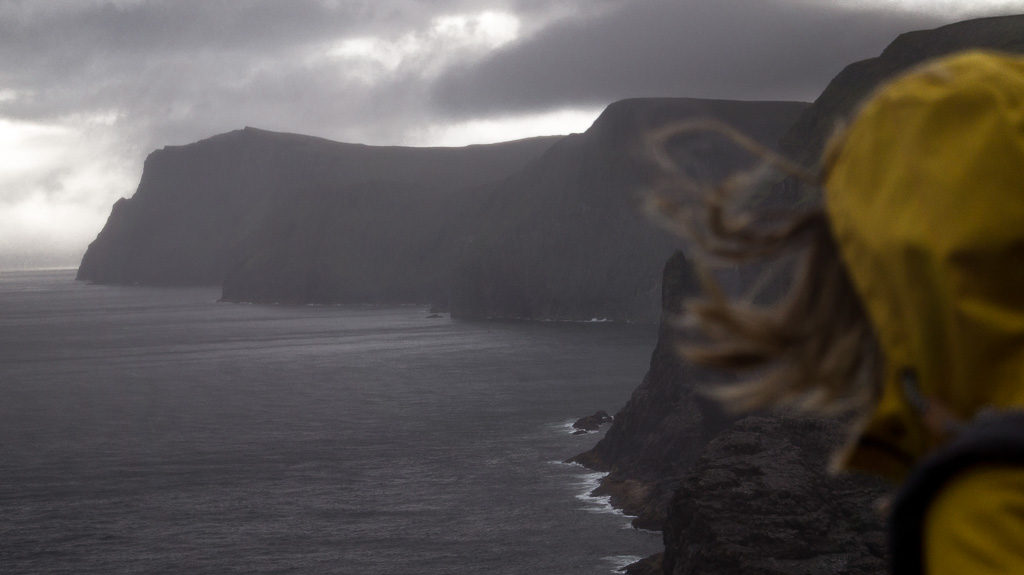
But there’s a real range of walking to be done here, from flat and easy to multi-day hikes. Check the Visit Faroe Islands hiking guide for gradings, which we found pretty accurate. Most of the walks we chose here we’d class as easy-moderate.
Signs & waymarking
As the popularity of hiking on the Faroe Islands grows, so do the paths. That means some places have clear trails, intuitively signposted. But still, more often than not, you will be following a cairn system: walking from piles of stones to piles of stones.
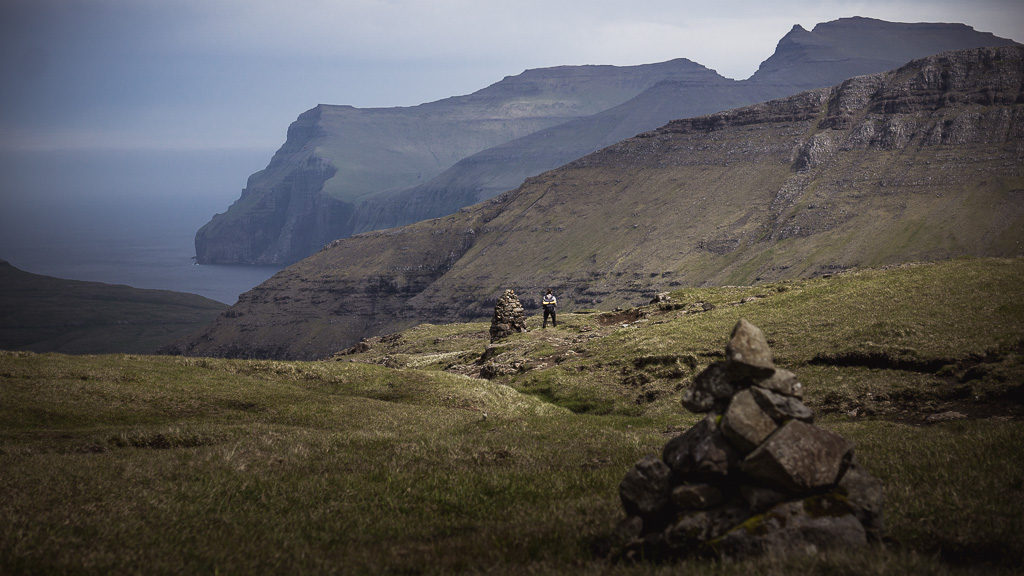
It worked fine for us – tricky in foggy weather, but it’s so changeable on the Faroes that we just waited it out and all became clear.
Hiking out & back
A lot of the hikes are one-way, which means that you have some choices. You either:
a) walk one-way and back again, or b) have two cars, one at either end (!?) or c) hitchhike or d) book a taxi/find a bus.
None of these options, it must be said, are particularly easy. There isn’t an extensive bus network and taxis would be very expensive. We tended to just walk back which was fine for us, but did mean walks took the whole day.
If you’re hiking to a popular tourist spot (like Tjørnuvík for example, the end of one our recommended hikes-link-), we saw a couple of hikers manage to get lifts at least part the way back to a starting point.
Food
Food and, indeed everything generally, is expensive on the Faroe Islands. So to save money it makes sense to bring a handful of energy bars with you from home to take on hikes. We probably ate 2 a day each and it ended up way cheaper and more convenient.
We also bought porridge sachets for the morning and chose accommodation where we were able to cook. Come to think of it we only really went out for coffees and fish n chips from Fish & Chips (which were delicious).
There are plenty of restaurants in Torshavn though, and the coffee culture there is thriving. It’s a bit strange elsewhere: expect lukewarm coffee from an urn and plastic cups in lots of places for some reason.
In conclusion, the Faroes are a fantastic, adventurous place to hike, even for a beginner. A beginner with a map, a waterproof and plenty of time that is 🙂
PIN IT:
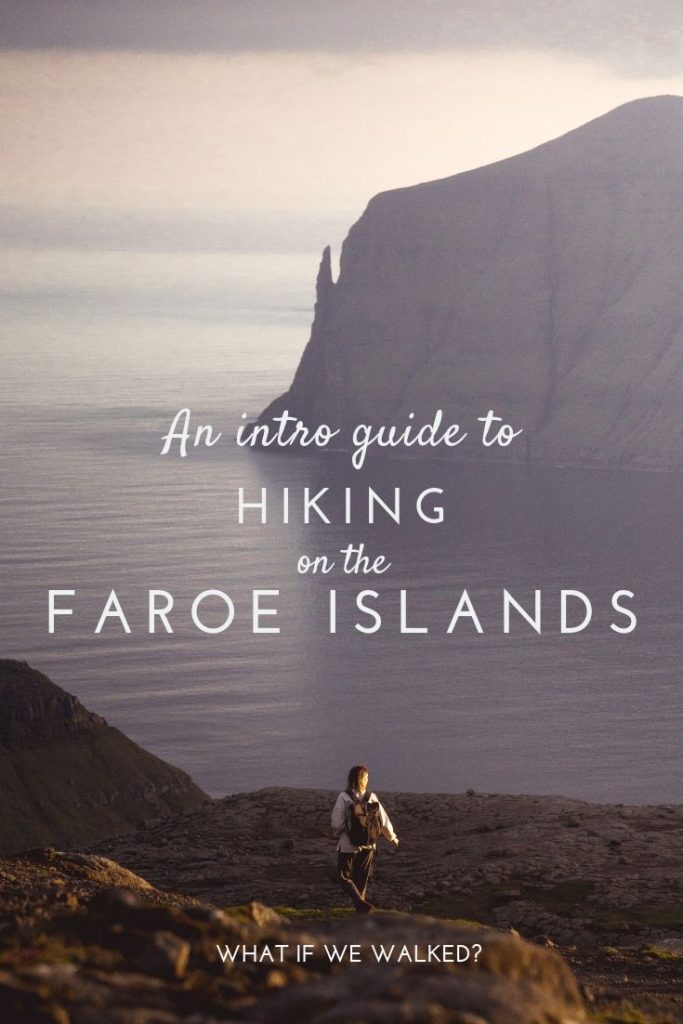
Note: we were supported on our trip to the Faroe Islands by Visit Faroe Islands. All our experiences and opinions most certainly our own.

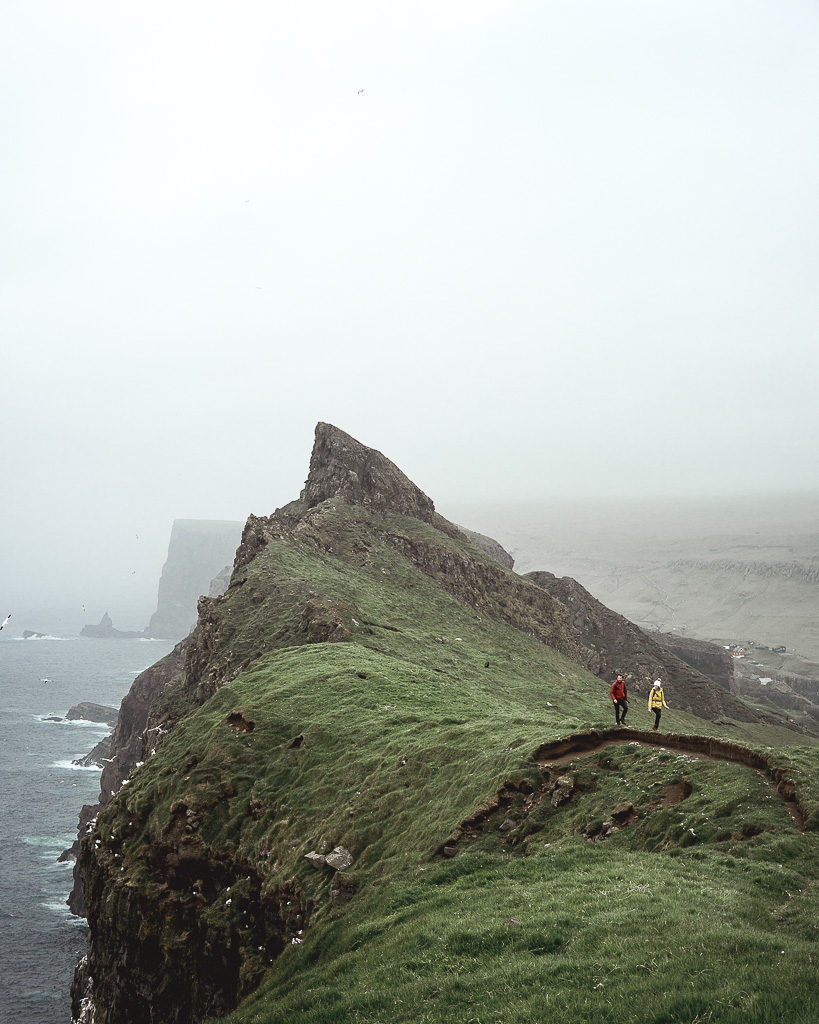
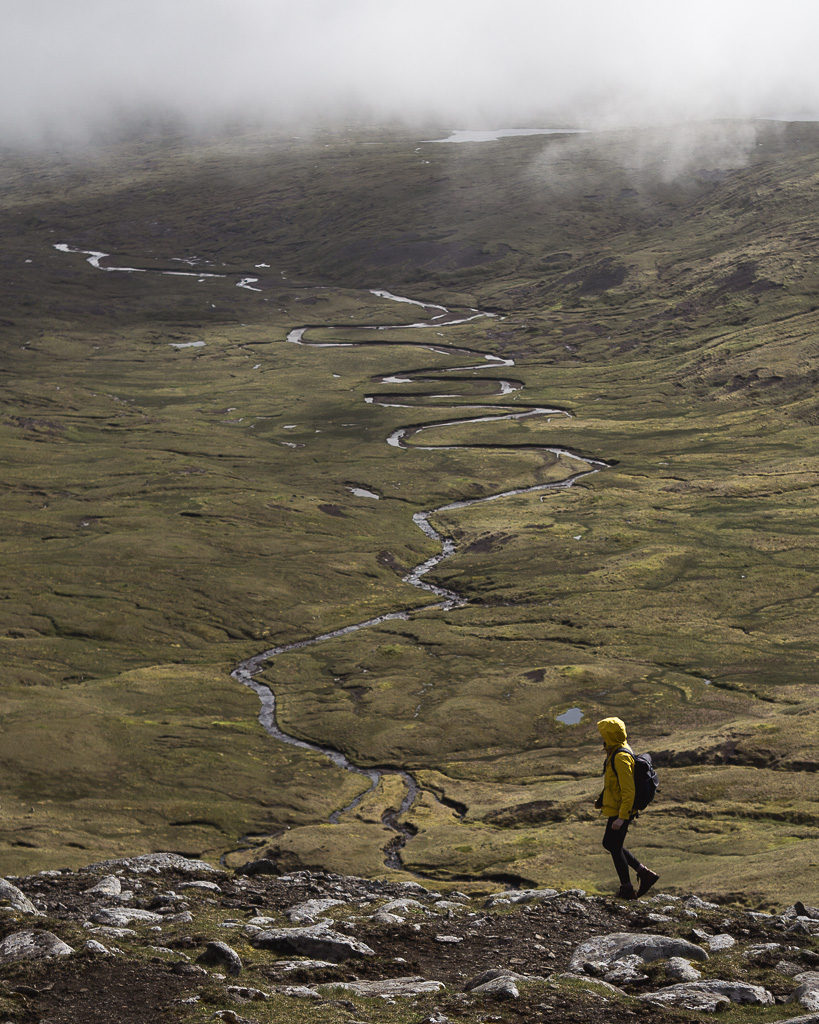
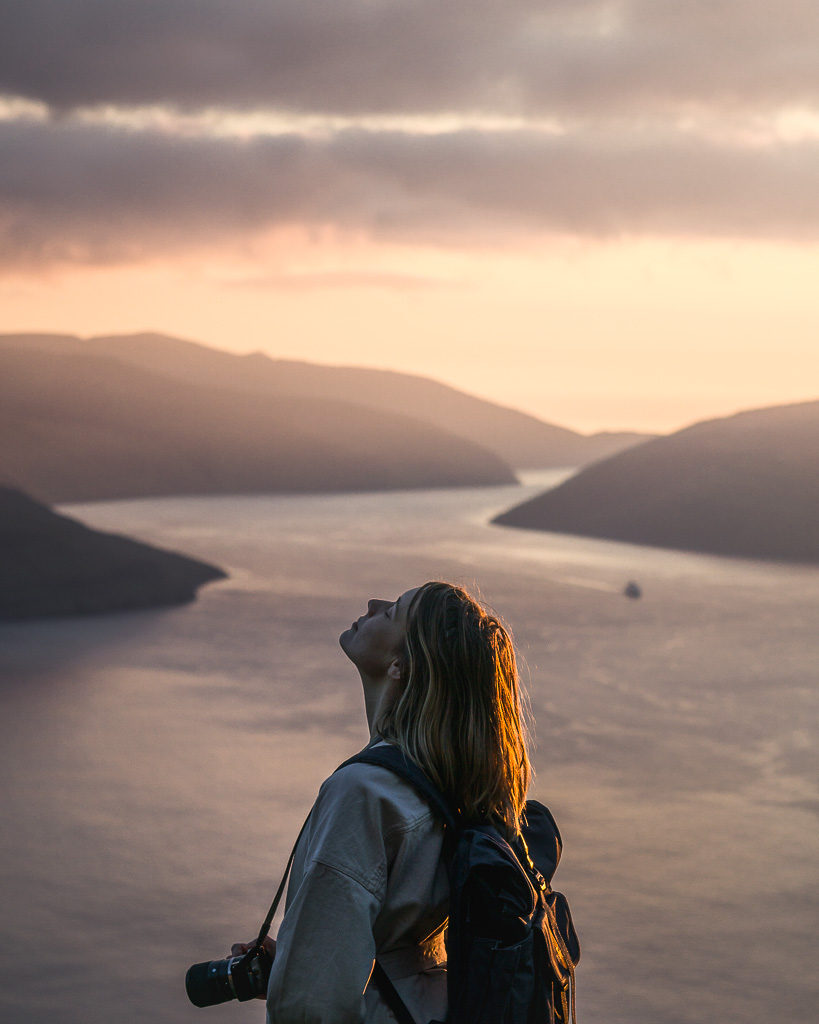
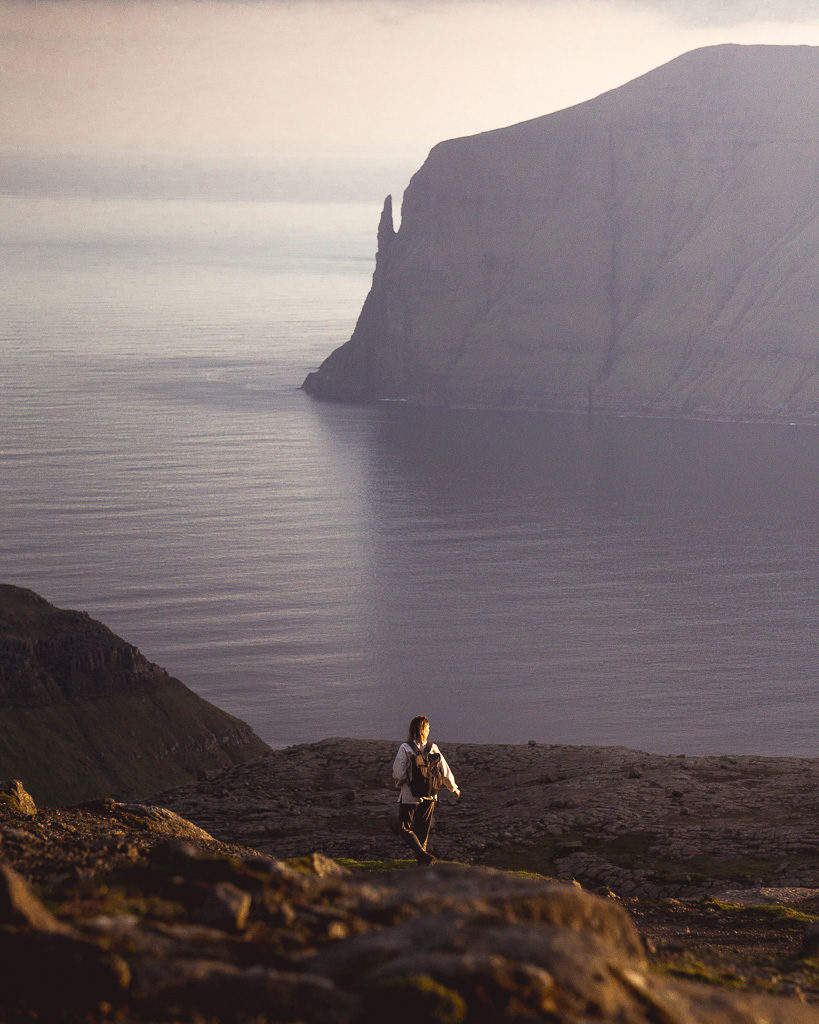
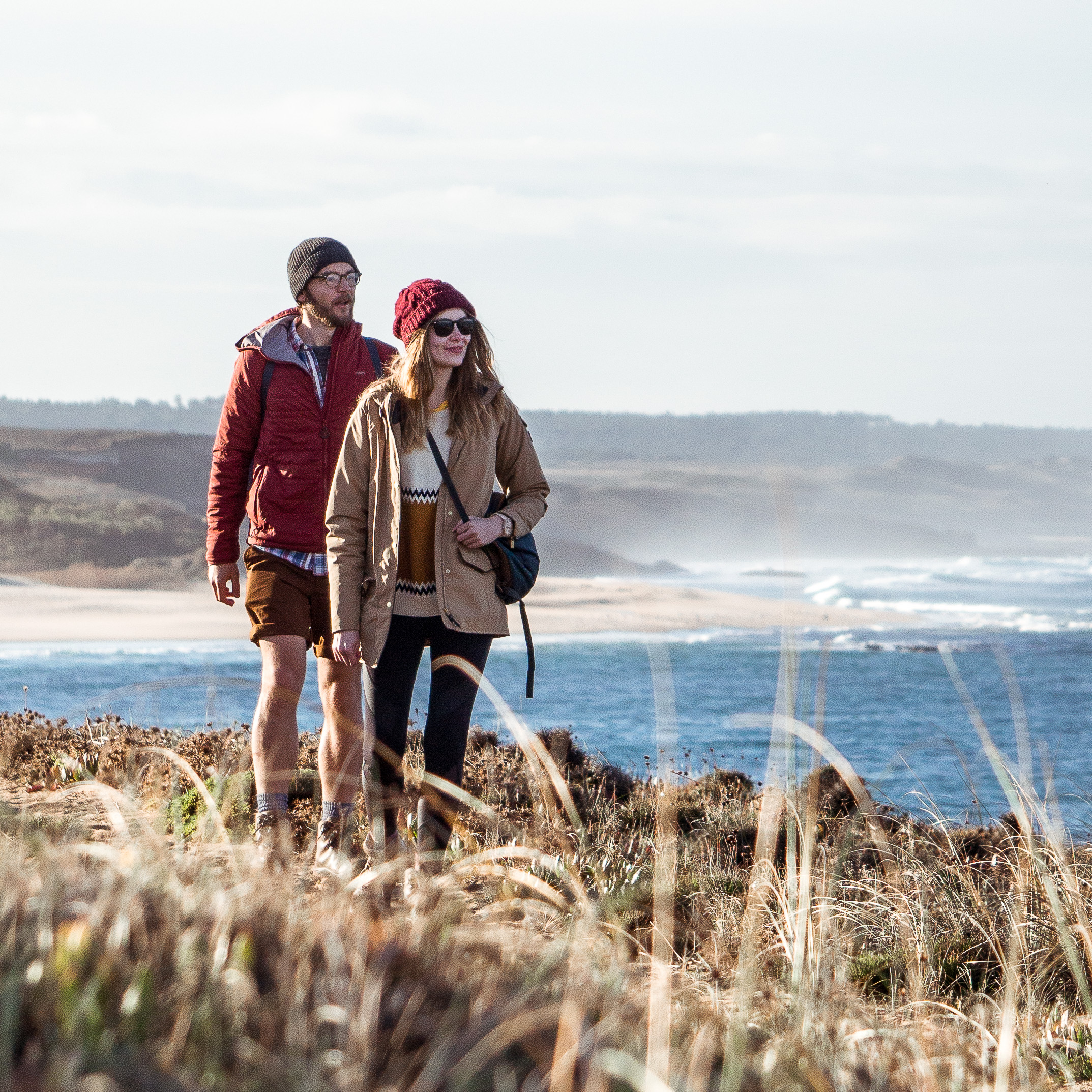
Saksun hike is about 75dkk per person in April 20220
Thanks very much, Hina